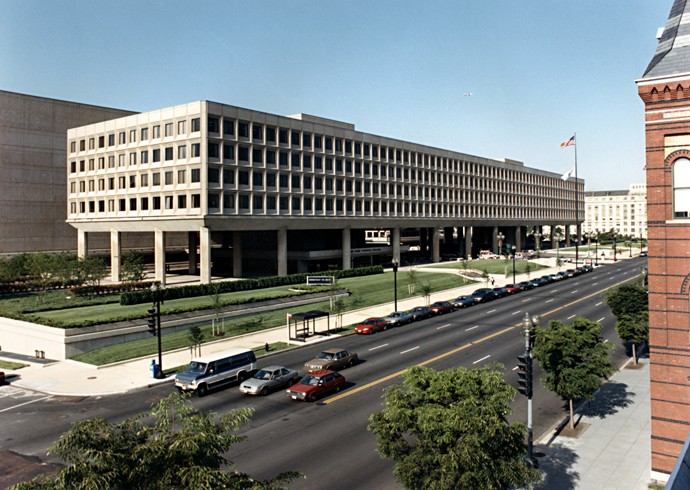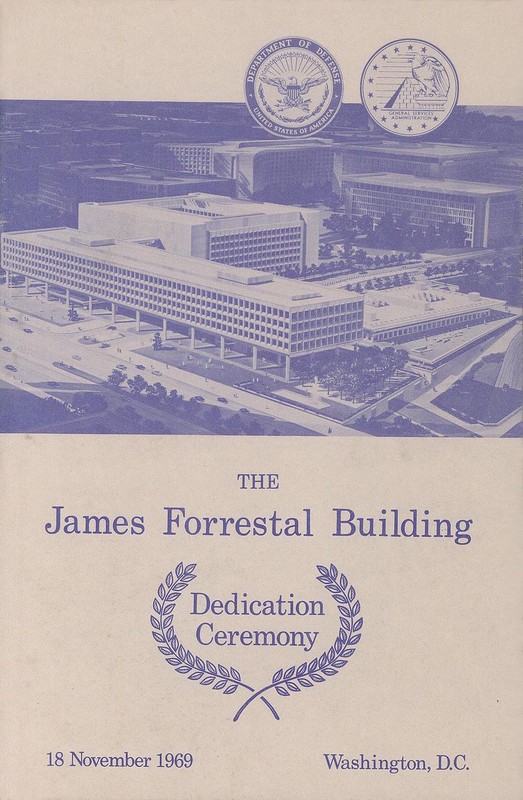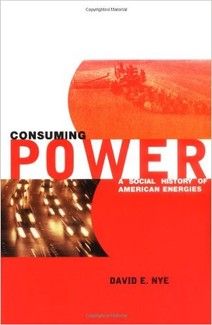James V. Forrestal Building, US Department of Energy
Introduction
Text-to-speech Audio
Named after the first US Secretary of Defense, this Cold War-era building features the briefly-popular Brutalist style of architecture that is itself a product of the Cold War. The building housed the offices of Navy personnel between its completion in 1969 and the creation of the Department of Energy in 1977. The creation of the Cabinet-level Department of Energy was a response to the various energy crisis of the 1970s and combined several existing federal agencies such as the Federal Energy Administration, the Federal Power Commission, and the Energy Research and Development Administration. The Department of Energy oversees a variety of civilian and military energy-related programs, including those related to nuclear weapons and nuclear power plants. In recent decades, the department oversees the government's efforts to develop and promote renewable energy initiatives.
Images
This low-rise office building was built during the Cold War as an office building for the military. From 1977 to the present, it has been home to the US Department of Energy.

1969 building dedication program

To learn more about American history and energy, click the link below for this book from MIT Press: Consuming Power: A Social History of American Energies

Backstory and Context
Text-to-speech Audio
On the eve of the Cold War, President Roosevelt initiated a Federal research program aimed at harnessing the potential of atomic power as a weapon. This led to the creation of the Manhattan Project and the world's first atomic bomb. After the war, Congress reflected the debate between many American scientists and civilians as to whether the nation should see atomic power in terms of military might, or as a source of energy that might be controlled by private companies and public utilities. In response, Congress created the Atomic Energy Commission which took control over the Manhattan Project and also students the potential of nuclear reactors as a source of power for both civilian and military purposes.
The energy crisis of the 1970s, as well as the proliferation of nuclear weapons and nuclear power plants (and related civilian concerns regarding these technologies) led to the creation of the Department of Energy as the 12th Cabinet-level federal agency. The Department of Energy Organization Act of 1977 consolidated several Federal energy agencies under one organizational structure. Today, the Department aims to create and implement a national energy plan, regulate energy prices, support America's independence from foreign sources of energy, and promote research and safety.
Now considered one of the least attractive federal buildings, (along with other Brutalist structures built during this same era like the Hubert Humphrey Building and the J. Edgar Hoover Building) the exterior of the Forrestal Building features pre-cast concrete units. Brutalism was an architectural style of the 1950s and 1960s characterized by concrete cast in block-like forms. As one might expect given the current occupant, the Forrestal Building has been upgraded to include numerous energy-efficient features and is powered partially by one of the largest solar arrays in the city.
The energy crisis of the 1970s, as well as the proliferation of nuclear weapons and nuclear power plants (and related civilian concerns regarding these technologies) led to the creation of the Department of Energy as the 12th Cabinet-level federal agency. The Department of Energy Organization Act of 1977 consolidated several Federal energy agencies under one organizational structure. Today, the Department aims to create and implement a national energy plan, regulate energy prices, support America's independence from foreign sources of energy, and promote research and safety.
Now considered one of the least attractive federal buildings, (along with other Brutalist structures built during this same era like the Hubert Humphrey Building and the J. Edgar Hoover Building) the exterior of the Forrestal Building features pre-cast concrete units. Brutalism was an architectural style of the 1950s and 1960s characterized by concrete cast in block-like forms. As one might expect given the current occupant, the Forrestal Building has been upgraded to include numerous energy-efficient features and is powered partially by one of the largest solar arrays in the city.
Sources
A Brief History of the DOE, http://energy.gov/management/office-management/operational-management/history/brief-history-department-energy accessed 11/22/15
